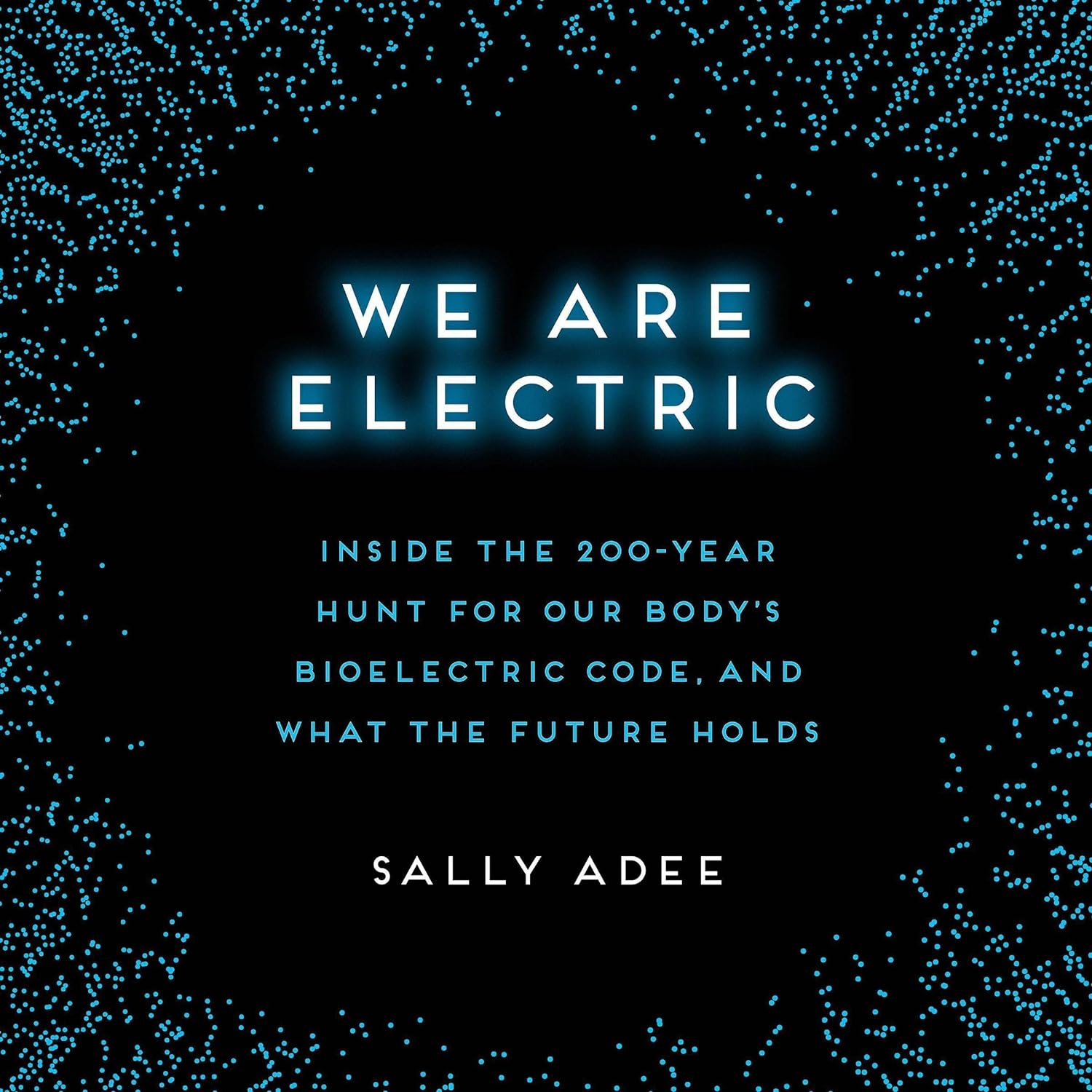Sally Adee’s “We Are Electric” stands out as an extraordinary exploration into the realm of bioelectricity—the subtle currents that flow through our bodies and govern a multitude of vital processes. Recognized by the New York Post as one of the Best Books of 2023, this book delves into the deep, often misunderstood history of bioelectricity, revealing astonishing findings that have the potential to revolutionize human health. Unlike trendy biohacker books, Adee’s work is rooted in robust scientific inquiry and historical context, tracing the journey from 18th-century scientific feuds to contemporary breakthroughs.
The Misunderstood History of Bioelectricity
The story of bioelectricity begins in the 18th century with two pioneering figures: Luigi Galvani and Alessandro Volta. Galvani, known as the father of bioelectricity, famously demonstrated that frog legs could twitch when exposed to electrical currents. He believed that this phenomenon was due to “animal electricity,” an intrinsic force within living tissues. In contrast, Volta, the inventor of the battery, argued that the electricity observed by Galvani was due to external sources, not an inherent property of the animal’s body. This debate laid the groundwork for centuries of exploration into the electrical nature of life.
Discovering the Electrome
Today, we understand that every cell in our bodies—be it bone, skin, nerve, or muscle—possesses a voltage, functioning like a tiny battery. This bioelectricity is crucial for various physiological processes:
- Signal Transmission: Our brain communicates with the rest of the body through electrical signals. Neurons transmit information via electrical impulses, facilitating everything from muscle contractions to sensory perceptions.
- Development: During embryonic development, bioelectric signals guide the differentiation and organization of cells, shaping the growing organism.
- Healing: Bioelectricity plays a vital role in tissue regeneration and wound healing. Electric fields can direct cell migration and influence cell behavior, promoting repair and recovery.
The Promise of Bioelectric Medicine
Adee’s book explores the transformative potential of bioelectric medicine. Here are some promising applications:
- Cancer Treatment: One of the most exciting prospects is the ability to control or correct bioelectric signals to treat cancer. By flipping the bioelectric “switch,” scientists hope to revert malignant cells back to their healthy states, effectively undoing cancer.
- Regenerative Medicine: Bioelectricity could be harnessed to regenerate tissues, organs, and even limbs. This could revolutionize the treatment of injuries and degenerative diseases, offering new hope for recovery.
- Antibiotic Resistance: Bioelectric treatments might provide alternative approaches to fighting infections, particularly antibiotic-resistant bacteria. Electric fields and currents can disrupt bacterial biofilms and enhance the effectiveness of existing antibiotics.
- Cardiovascular Health: By understanding and manipulating the bioelectric signals that regulate heart function, researchers aim to develop new treatments for heart disease, including methods to clear blocked arteries.
From Quackery to Cutting-Edge Science
The journey to understanding bioelectricity has been fraught with skepticism and quackery. In the Victorian era, medical charlatans claimed that electricity could cure everything from paralysis to diarrhea, leading to widespread mistrust. However, legitimate scientific advancements were made alongside these dubious practices. Notable discoveries included the identification of the giant axons in squids, which provided crucial insights into nerve conduction and bioelectricity.
Modern Breakthroughs and Future Directions
In recent decades, significant progress has been made in decoding the bioelectric code. Advances in technology and research methodologies have allowed scientists to map bioelectric patterns and understand their roles in health and disease. Some groundbreaking developments include:
- Brain Implants: Devices that interface with the brain’s electrical activity, offering potential treatments for neurological disorders such as Parkinson’s disease and epilepsy.
- Electric Drugs: Non-invasive treatments that use electric fields to influence cellular behavior and promote healing, representing a new frontier in medicine.
- Spinal Nerve Regeneration: Research into spinal nerve regeneration has shown promise, although initial experiments faced challenges. By overcoming these hurdles, scientists hope to restore function to individuals with spinal cord injuries.
The Electrome and Human Health
The concept of the electrome—encompassing all the different roles that electricity plays in living organisms—is gaining recognition as a crucial component of human health. Just as the microbiome (the community of microorganisms living in our bodies) has revolutionized our understanding of health and disease, the electrome offers a new dimension of biological insight.
When bioelectricity goes awry, it can lead to various health issues, including deformities, chronic diseases, and cancer. However, by learning to manipulate and correct bioelectric signals, we can unlock new avenues for treatment and prevention.
The Electrome as the Next Scientific Frontier
Decrypting the bioelectric code is poised to be as revolutionary as decoding the genetic code. Just as the Human Genome Project transformed our understanding of genetics and led to numerous medical advancements, mapping the electrome could usher in a new era of bioelectric medicine. This involves not only understanding the bioelectric patterns in health and disease but also developing technologies to monitor, manipulate, and restore these patterns.
Ethical Considerations and Challenges
With the promise of bioelectric medicine come ethical considerations and challenges. The potential to manipulate bioelectric signals raises questions about the extent and limits of such interventions. Issues of accessibility, consent, and long-term effects must be carefully considered. Additionally, integrating bioelectric treatments with existing medical practices will require significant research, regulation, and education.
Conclusion
Sally Adee’s “We Are Electric” illuminates the hidden world of bioelectricity, revealing its profound impact on life and its potential to revolutionize medicine. By tracing the history from 18th-century debates to modern scientific breakthroughs, Adee offers a compelling narrative that bridges the past, present, and future of bioelectric research. As we continue to explore and understand the electrome, we stand on the brink of a new scientific frontier—one that promises to transform our approach to health and disease, offering remarkable possibilities for the future of medicine. This book not only educates but also inspires, reminding us of the incredible potential within our bodies and the exciting discoveries that lie ahead.








